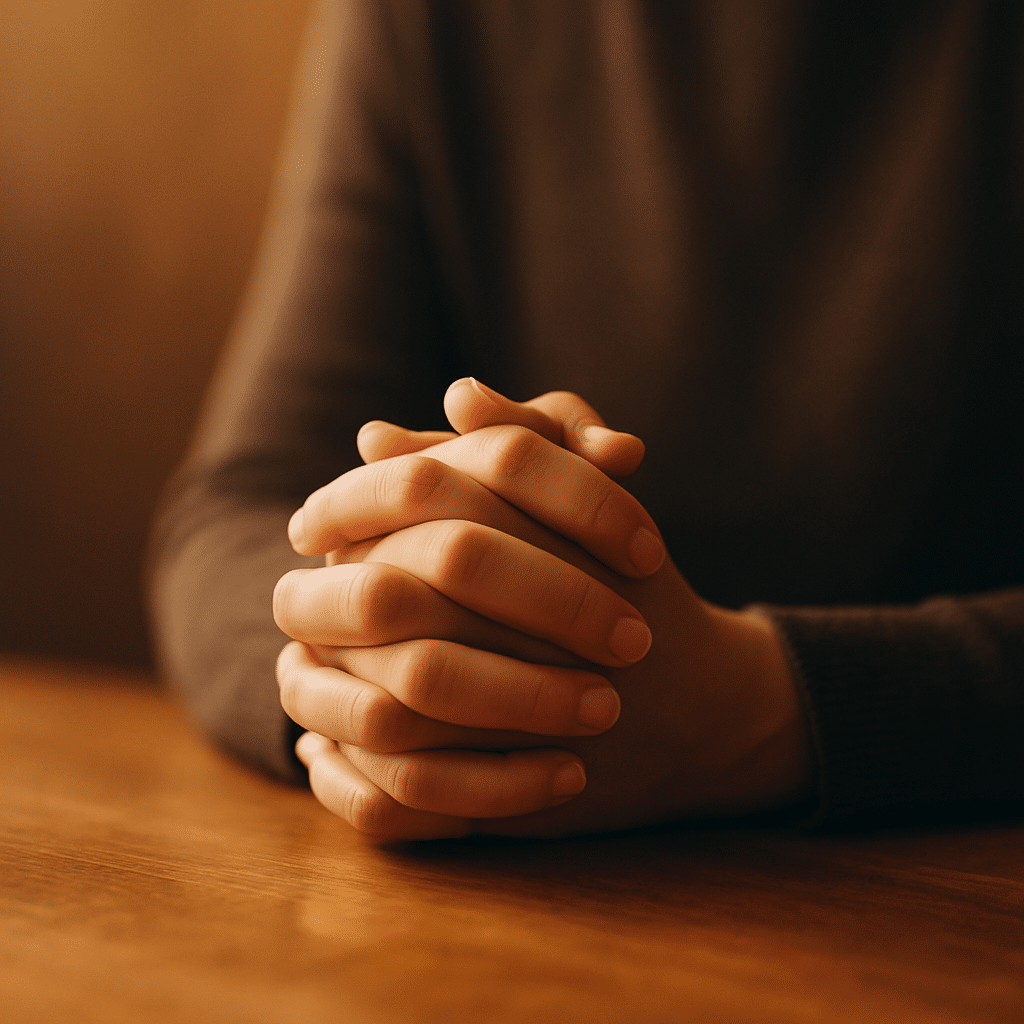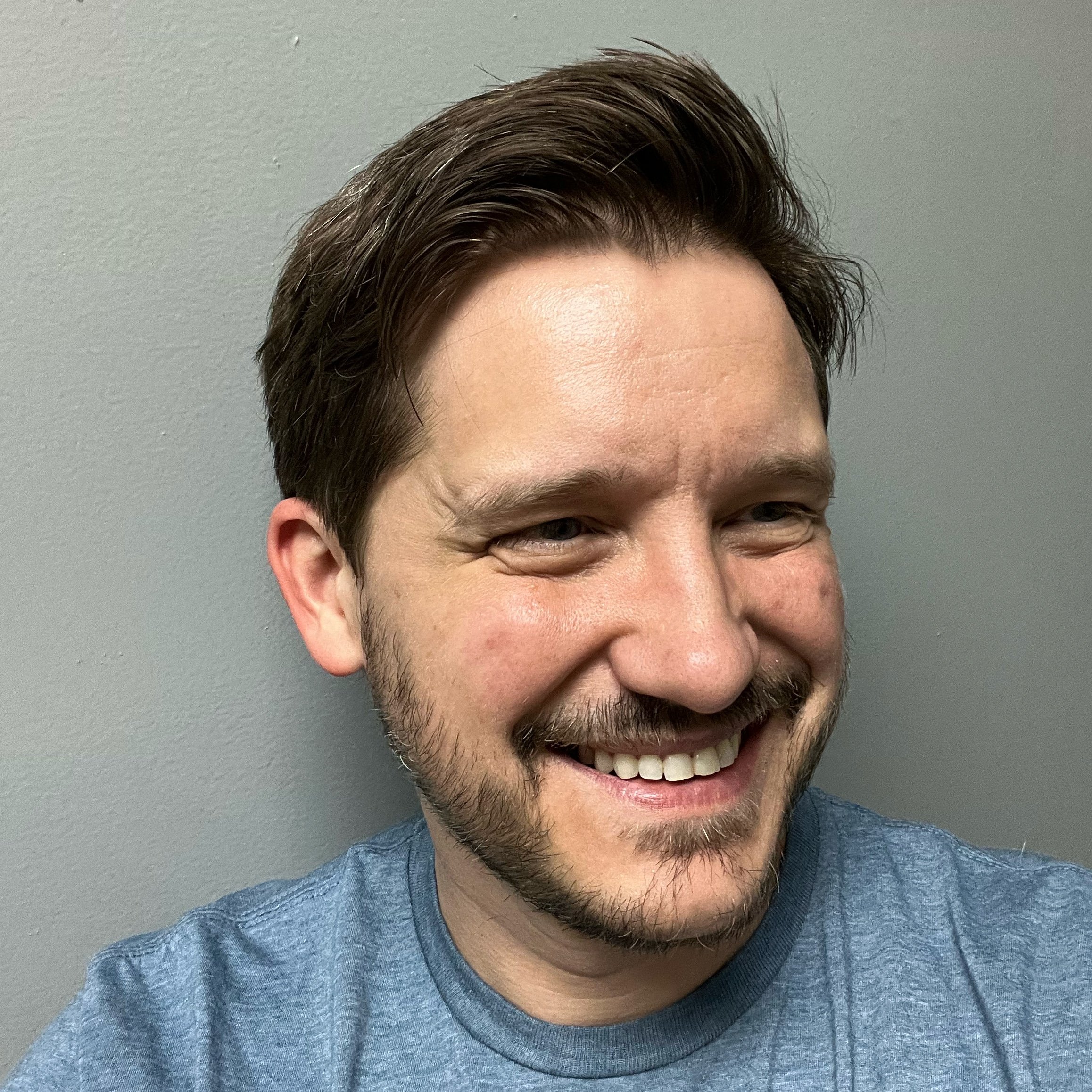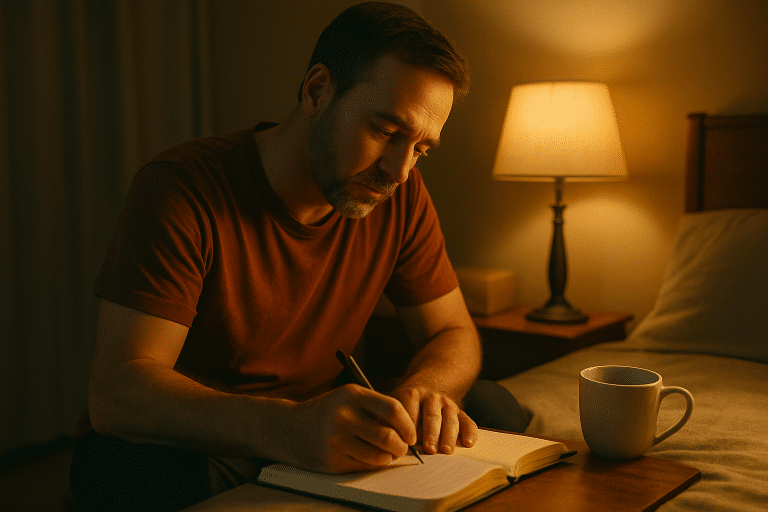Prayer for Anxiety: A Complete Faith and Science Guide
Estimated reading time: 6 minutes
Introduction
Modern life throws alerts, deadlines, and global headlines at us every minute, yet the ancient discipline of prayer for anxiety still calms the nervous system more reliably than another scroll through social media. However, many Christians wonder whether faith practices can sit comfortably beside cognitive‑behavioural therapy or medication. Because Scripture urges us to “cast every care upon Him,” and because medical science now maps how chronic stress reshapes the brain, a balanced roadmap is essential.
In the next few minutes you will discover why anxiety takes root, how specific prayers interrupt its spiral, and which evidence‑based therapies dovetail with daily devotion. You will also receive product suggestions and free resources so that applying each idea feels simple rather than overwhelming. Whether you are a student facing exams, a parent juggling work and children, or a leader shouldering big decisions, the strategies here can help you breathe again.
Throughout the article three themes repeat. First, God remains present and willing to comfort; second, the human nervous system can learn new rhythms; and third, community support multiplies progress exponentially. Keep these pillars in mind as we begin, and invite the Holy Spirit to personalise each step. When faith collaborates with neuroscience, a rested heart becomes possible.
Causes of Anxiety and How Prayer Helps
Why does anxiety linger even among devoted believers? The answer lies in an overlap of biology, cognition, and theology. When your amygdala senses threat it releases adrenaline, and if that loop repeats the brain wires for hyper‑vigilance. Catastrophic thoughts fan the flames, while the enemy whispers that God has forgotten you. Fortunately, cycles can reverse.
Nevertheless, both research and Bible passages show that the cycle can shift. Philippians 4 tells us to pray “with thanksgiving,” and Harvard Medical School reports that meditative prayer activates the parasympathetic “rest‑and‑digest” response. Because the brain is plastic, every calm prayer session strengthens neural peace as powerfully as each panic episode once strengthened fear.
Therefore, begin by identifying personal triggers. Write them in a journal titled Anxiety Prayer Log. Next to each entry, craft a short prayer for anxiety such as Psalm 56:3: “When I am afraid, I put my trust in You.” Over weeks you will notice the physiological punch fade. Additionally, share one recurring fear with a trusted friend; a Baylor University study found that people who knew others were praying for them recorded lower anxiety scores after six weeks.
How Prayer for Anxiety Rewires the Brain
How prayer for anxiety rewires the brain is no longer a mystery. Functional MRI scans by Dr Andrew Newberg show reduced amygdala activity and increased prefrontal blood flow during contemplative prayer. Similarly, Baylor researchers discovered that conversational prayer predicted lower Generalised Anxiety Disorder scores—provided the participant trusted God’s response.
These findings align perfectly with theology. When we pray, we shift focus from unpredictable circumstances to an unchanging Father, thereby reframing cognitive appraisals. Cognitive‑behavioural therapists call this “cognitive re‑appraisal”; Paul called it “renewing the mind.” Physiological relaxation follows within sixty seconds, lowering heart rate and blood pressure.
Therefore, commit to a ninety‑second prayer pause whenever adrenaline spikes. Breathe in for four counts, hold for four, breathe out for six, and whisper Psalm 23:1. Repeat twice. A meta‑analysis in Psychology of Religion and Spirituality reports that three daily pauses for one month reduce trait anxiety by twenty‑five percent. Moreover, imaging data reveal that prayer strengthens the anterior cingulate cortex, enhancing emotional regulation.

An Integrated Plan for Lasting Peace
Medicine, therapy, and spiritual disciplines harmonise rather than compete. The National Institute of Mental Health lists cognitive‑behavioural therapy and selective serotonin re‑uptake inhibitors as first‑line treatments, and many Christians report deeper engagement in prayer once intrusive symptoms settle. Accepting medical help can be an act of stewardship.
For example, Maria paired a low‑dose SSRI with a daily prayer for anxiety. In eight weeks her GAD‑7 score fell from fifteen to seven. She then tapered caffeine, practised gratitude journaling, and added gentle exercise. Her pastor prayed with her before each medication adjustment, framing the process as partnership with God.
Therapists integrate faith by replacing anxious thoughts like “I will fail” with truths such as “God equips me.” When this reframing occurs in session and later during devotions, neural pathways strengthen twice as fast, according to the Journal of Religion and Health. Schedule a collaborative care meeting with your counsellor, physician, and spiritual mentor; open prayer unifies advice and reassures your nervous system.
Recommended Tools to Support Your Anxiety Prayer Routine
Recommended tools to reinforce your anxiety prayer routine come in many forms. Below are three options that blend theology, psychology, and affordability.
Anxious for Nothing (book): Max Lucado shares stories, Scripture, and cognitive tips. Each chapter ends with a focused prayer for anxiety—ideal for journal prompts.
Abide Christian Meditation App (mobile): guided Bible sleep stories and breathing tracks. Independent studies show audio meditations lower evening cortisol by twenty percent.
Olive‑wood Comfort Cross (tactile aid): holding the smooth wood during prayer anchors wandering thoughts through sensory feedback.
Explore deeper training in the free Anxiety Prayer Guide and the cornerstone Christian Meditation Roadmap for video lessons.
Conclusion: Living Daily the Prayer for Anxiety Lifestyle
Conclusion: living the prayer for anxiety lifestyle means cultivating repeatable habits rather than chasing dramatic moments. Schedule two five‑minute pauses today, keep Scripture close, and lean on community.
Anxiety arises when biology, thoughts, and spiritual doubts collide; yet evidence shows that a holistic plan—rooted in regular prayer for anxiety—reverses that collision. Partnering with professionals multiplies results, as Maria’s story demonstrated.
Setbacks will occur. View them as feedback that it is time to pause, breathe, and realign. Tracking small wins prevents discouragement, and every testimony you gather will later encourage others. Celebrate progress weekly; neuropsychologists note that gratitude cements new neural pathways.







